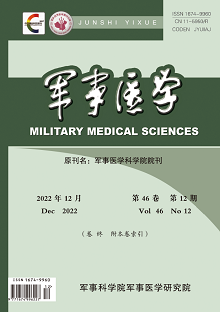Original articles
MENG Guang-yu, LI Xue, LI Lu, LIU Yuan-lin, WANG Yang, ZHENG Rong-xiu, ZHANG Yi
Objective To explore the molecular mechanism by which microRNA-24-3p(miR-24-3p) inhibits type 1 T helper cell(Th1) polarization. Methods Murine naïve CD4+ T cells were purified by negative CD4 immuno-magnetic beads isolation kit from murine splenic mononuclear cells before being induced to Th1 cells via mouse IFN-γ. The naïve CD4+ T cells transfected with miR-24-3p mimic were cocultured for 72 h and flow cytometry was used to detect the percentage of interferon-γ+ (IFN-γ+) and CD4+ Th1 cells. The expression levels of the key factors, including IFN-γ, Tbx21, STAT1, STAT4 and IL-12Rβ1, which regulated Th1 polarization through JAK-STAT signaling pathway,were examined by qPCR. The protein levels of transcription factor STAT1 and phosphorylated STAT1, which determined Th1 polarization efficiency, were analyzed via Western blotting. Bio-informative analysis was used to predict the targets of miR-24-3p,dual-luciferase assay was used to examine the binding between miR-24-3p and the 3′-UTR of IFN-γ/STAT1. Results Naïve CD4+ T cells were obtained using the immune-magnetic beads method. The percentage of CD4+ IFN-γ+ cells in Th1 group was (73.98±3.65)% after IFN-γ induction. Compared with Th1 group, co-transfection of miR-24-3p could reduce the percentage of CD4+ IFN-γ+ cells to (60.61±4.70)% (P=0.0176). The expression levels of STAT1 (P=0.0002), Tbx21 (P=0.0056) and STAT4 (P=0.0009), the key transcription factors determining Th1 cell polarization, were down-regulated after miR-24-3p mimic transfection. Meanwhile, the expressions of IFN-γ (P=0.0003)and IL12Rβ1 (P=0.0038) of JAK-STAT signaling pathway was decreased. Moreover, the protein levels of STAT1(P=0.0113) and activated p-STAT1(P=0.0161) were decreased. Consistent with the bio-informative analysis, the dual-luciferase reporter system showed that miR-24-3p could specifically target to the 3'-UTR of IFN-γ and STAT1,thus inhibiting the expressions of IFN-γ and STAT1. Conclusion MiR-24-3p can specifically down-regulate the expressions of IFN-γ and STAT1, and inhibit Th1 cell polarization by blocking the activation of IFN-γ/STAT1 signaling.
